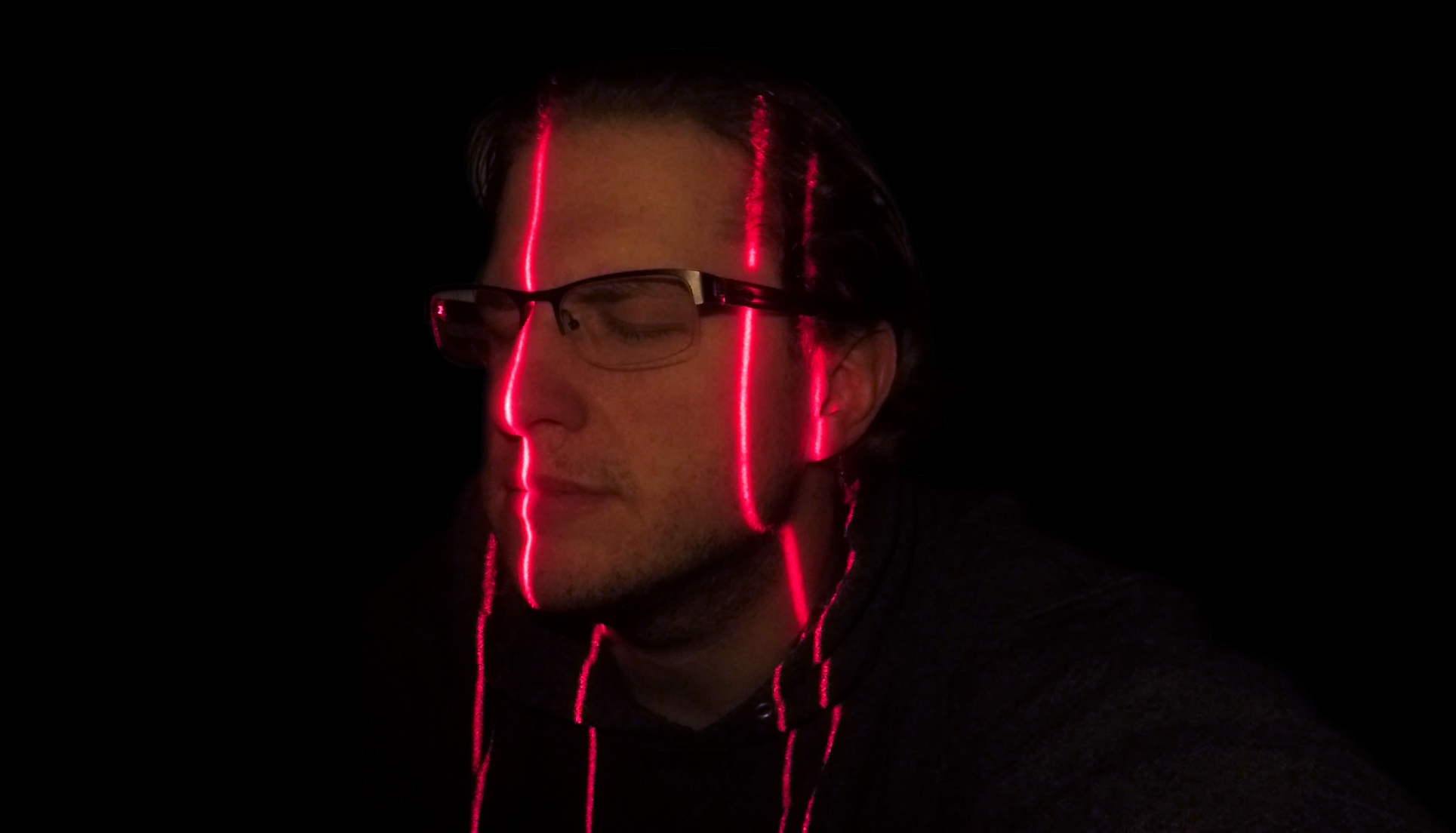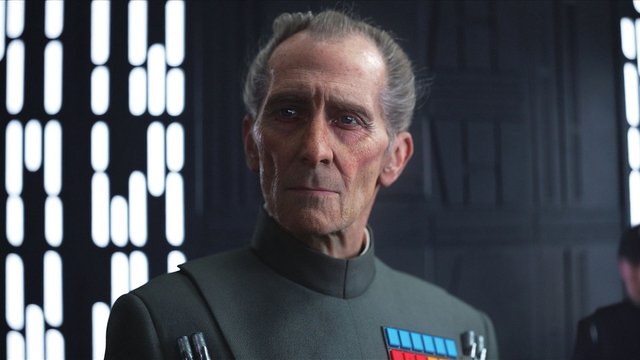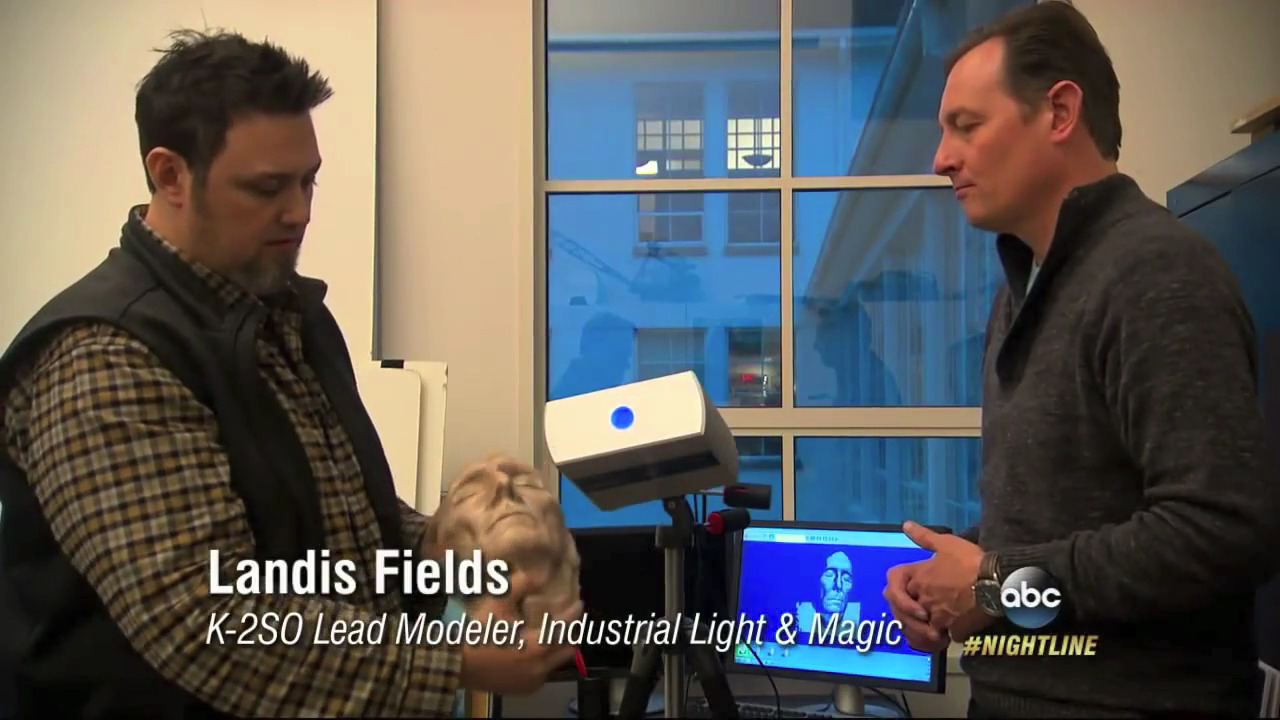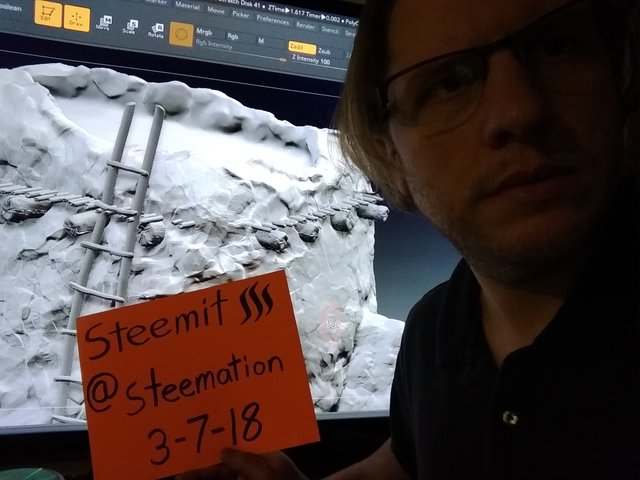Real Face Scanning & STAR WARS?

Just doing some test scans in the studio today. Getting things ready for an upcoming project that I would like to get moving on. I intend to start sharing glimpses into the processes of my 3D animations and CG film effects. I'm very excited about a CG short film that I intend to begin production on in the very near future. In part, I hope to meet other film makers, special effects artists and 3D modelers/animators etc. here on Steemit.
More about the 3D scanning. We just moved our studio to a new location. After unpacking the scanner, I just wanted to do a few tests. Not going for any real results here, because A. I don't often use myself as an actor. B. You can't get good results scanning through transparent and reflective things like glasses with this type of 3D scanner C. I needed to get my distance from the scanner to the subject adjusted. That is one thing about 3D scanning that can be very finicky. There is a fair amount of testing involved to calibrate for the proper distance. Lighting is also critical unless you plan on completely repainting the object.
We have been pleased with the results we are getting with our NextEngine scanner. It is the same scanner that was used by Industrial Light and Magic in the Star Wars movie "Rogue One".

[Above: Star Wars Rogue One - from: medium.com/@philthecool/rogue-one-talking-tarkin-65bd4211d076]
They used this scanner to bring back from the dead the character Tarkin, who was the Supreme Commander of the Death Star. Tarkin was played by the British actor, Peter Cushing. Peter Cushing had been dead since 1994! They were able to scan a life cast of Cushing's face that had been made for another movie that Cushing was featured in. Long story short, Industrial Light and Magic finds this scanner to be good enough for them in what they are doing and so do we!
Here is a link to a news clip that talks more about ILM using this scanner. http://cache.nextengine.com/movies/rogue-one/1280x720.mp4
[The above link and image taken from the video at that link are part of the "abc nightline" program.]
We have been using NextEngine 3D scanners for several years in our studio. I think the quality is amazing. Although, I will say that it really isn't as simple as it appears to be. There is still quite a bit of work that goes into 3D scanning. Often times you end up with artifacts or unwanted distortions that have to manually be "cleaned up". This can take huge amounts of time depending on type of scan you are making. You also have to piece the scans together. That can also be very time consuming on certain models.
After writing this, I'm thinking I better put together a video on Dtube to show just how much work is involved with this type of 3D scanning. I will be the first to admit, when I first ordered the scanner, I thought that all my problems 3D modeling and scanning of real life objects were over. They weren't. There are scanners available that cost tens of thousands of dollars and perform with stunning accuracy and speed. While this scanner is quite accurate, it is not fast by any stretch of the word. The nicest thing about this scanner, is it is quite affordable. Yes, it is $3000 (USD) but for the quality it puts out, it is worth it. Now, is it worth it for the average person just tinkering around? No. That is unless you've made it big on steemit!
One thing that I've found our scanner very useful for is making photo real props. I've seen this scanner used for so many different things, I guess it is all up to your imagination. Speaking of imagination, I better get back to work!

A voice in my head is telling me that NextEngine was originally for gaming? I've had a quick look on the web and cannot (So far) find anything to substantiate that claim though. :-)
I wouldn't think so. At least not on a large scale. No question that Studios have used it for games. However, games don't require anywhere near the high definition that this scanner provides. Our studio has used the scanner to make elements for games as well, simply because this was the scanner that we had on hand. The original use our studio had for the scanner was in creating photo-realistic digital replicas for use in film effects. When I first found this scanner, the impression I had from next engine was that it was largely being used in film, historical artifact archiving and reverse engineering. You could be right though. That just wasn't my understanding.
I follow you follow me please.
This post has received gratitude of 2.97% from @appreciator courtesy of @steemation!
You got a 3.71% upvote from @postpromoter courtesy of @steemation!
Want to promote your posts too? Check out the Steem Bot Tracker website for more info. If you would like to support the development of @postpromoter and the bot tracker please vote for @yabapmatt for witness!
You got a 5.26% upvote from @brupvoter courtesy of @steemation!